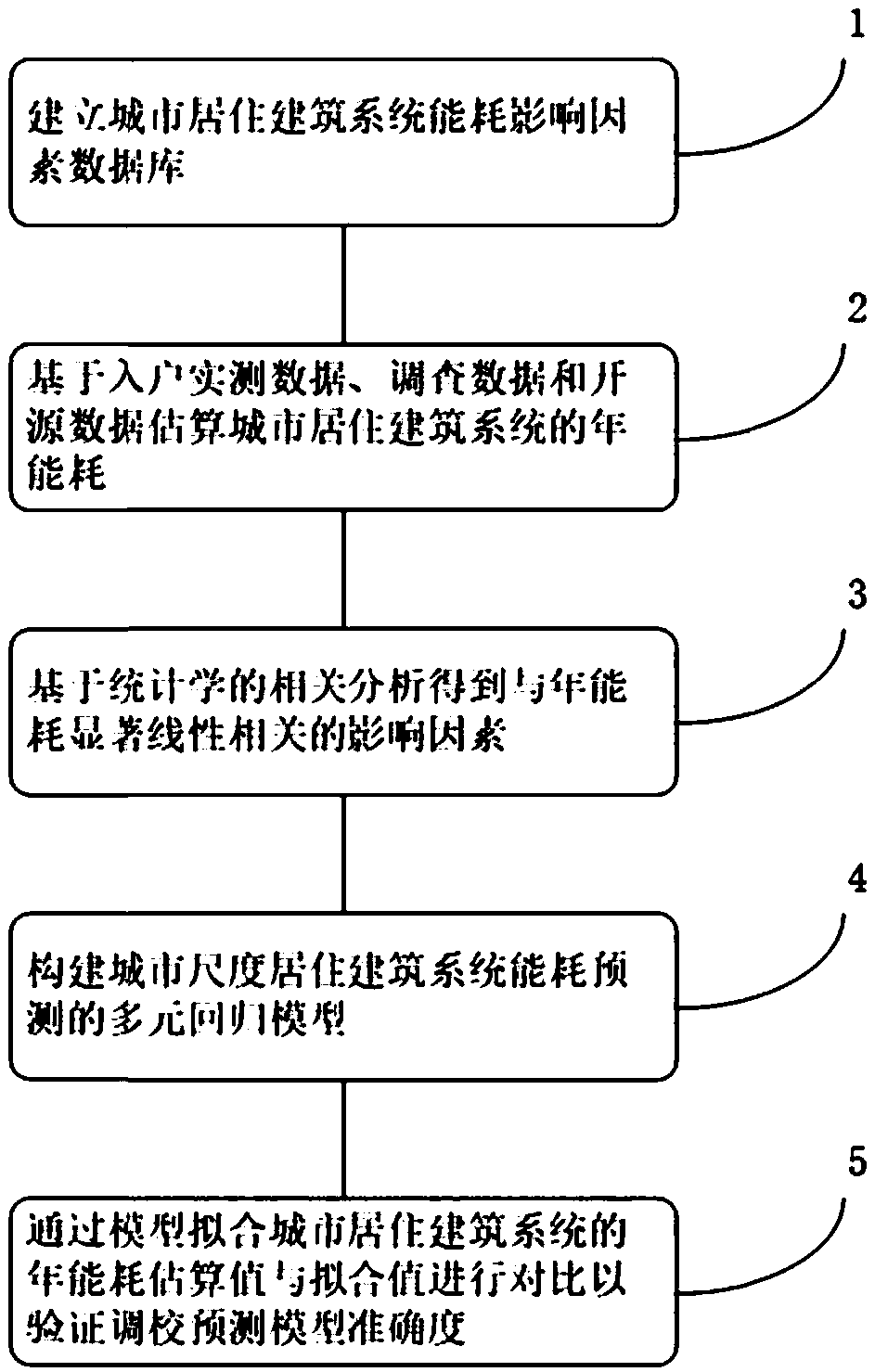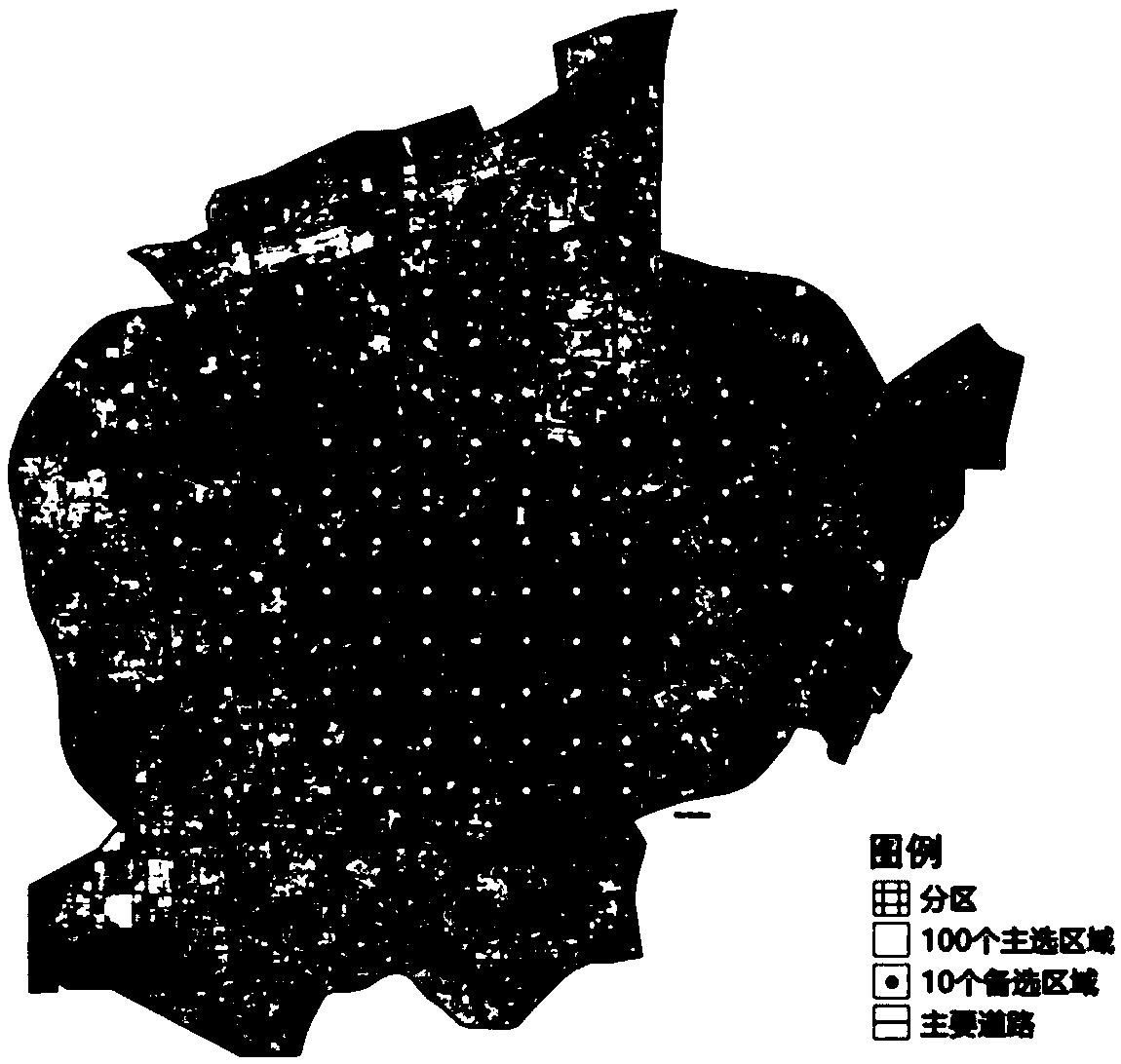A method for predicting energy consumption of urban residential building system in cold area
A building system and technology in cold regions, applied in the field of energy consumption prediction of urban residential buildings, can solve problems such as the influence of building energy consumption levels and energy habits, and achieve the effect of multiple sources of data acquisition paths and reliable results
- Summary
- Abstract
- Description
- Claims
- Application Information
AI Technical Summary
Problems solved by technology
Method used
Image
Examples
Embodiment 1
[0052] A method for predicting overall energy consumption of urban-scale residential buildings in cold regions of the present invention comprises the following steps:
[0053] 1) Establish a database of factors affecting energy consumption of urban residential building systems in cold regions:
[0054] Divide the urban built-up area in a cold area into 144 grids, each grid area is 1.6Km×1.6Km; there are 109 main residential areas in the 144 grids; out of the 8.7 million population in the city center, 110 volunteer families, 110 volunteer families were screened and randomly located in 68 grids including major residential areas, such as figure 2 shown. Please refer to image 3 and Figure 4 , a residential building among the 110 volunteers was randomly selected as an independent small residential building system, and the building data, measured data, equipment data and behavioral data were surveyed at home; the building data included: building type, structural form, Buildin...
PUM
 Login to View More
Login to View More Abstract
Description
Claims
Application Information
 Login to View More
Login to View More - R&D
- Intellectual Property
- Life Sciences
- Materials
- Tech Scout
- Unparalleled Data Quality
- Higher Quality Content
- 60% Fewer Hallucinations
Browse by: Latest US Patents, China's latest patents, Technical Efficacy Thesaurus, Application Domain, Technology Topic, Popular Technical Reports.
© 2025 PatSnap. All rights reserved.Legal|Privacy policy|Modern Slavery Act Transparency Statement|Sitemap|About US| Contact US: help@patsnap.com



